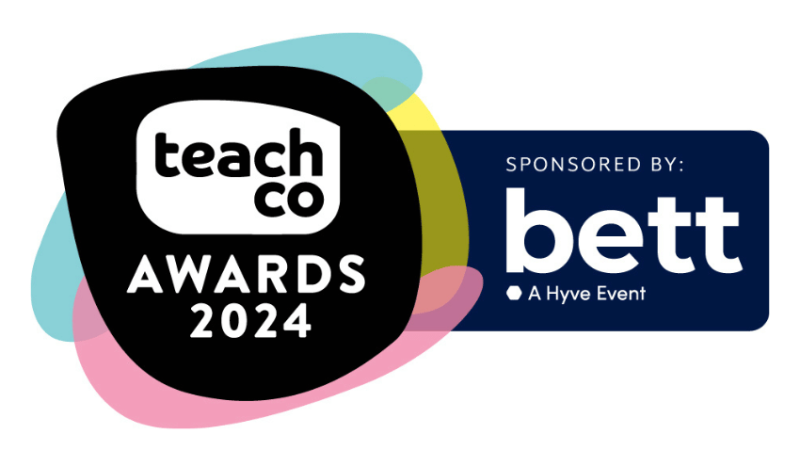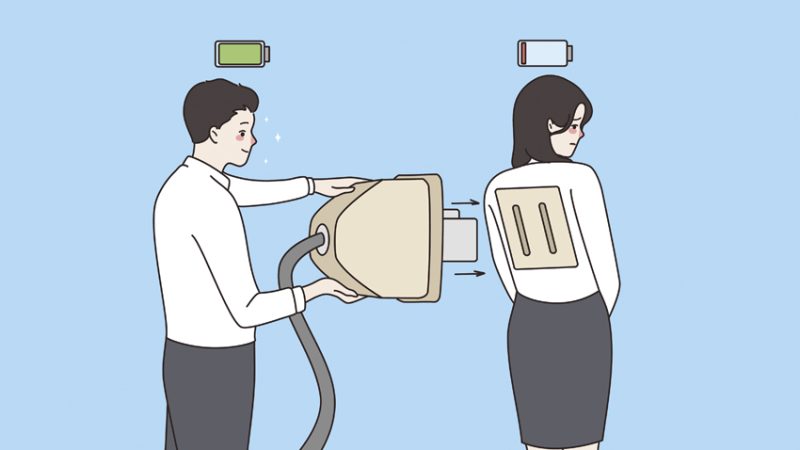Teacher workload – Why less is more

For teachers, it’s the ‘stuff’ that doesn’t directly concern classroom teaching that saps mental and physical energy…

- by Teachwire

A relentless teacher workload treadmill of planning, resourcing, differentiating, marking, remarking, data entry and reporting is causing many to leave the profession. What can be done about it?
When you’re too tired to actually teach
Heard about the teacher who was worked to the bone and couldn’t perform? Almost certainly – and therein lies the problem, writes Matt MacGuire…
Teachers should teach. They should, to quote David Didau, ‘Make kids cleverer’. Their job is to ensure the learners in their charge build the knowledge and skills associated with their subject area.
The best learning happens in the classroom, under the supervision of the subject expert. This is someone who is able to carefully build students’ schemata.
Match-ready
For this to happen, however, the teacher needs to be energised, enthusiastic, positive and alert. The teacher must be able to:
- circulate ceaselessly
- have eyes on every student
- explain with clarity and concision
- repeat and rephrase as often as necessary.
The lesson is to the teacher what the ‘big match’ is to the sportsperson. The fighter leaves everything in the ring. The teacher leaves everything in the lesson. No athlete would overexert themselves in training the night before a big game. That would obviously diminish their performance when it counts.
And yet, far too often, teachers will do far too much work the night before their own ‘big game’. When every evening entails some combination of marking, planning, resource preparation and/or other tasks, the teacher can never be at their best in lessons the following day.
For teachers, this other ‘stuff’ that doesn’t directly concern classroom teaching will likely sap their mental and physical energy. An obvious example would be a long parents’ evening, followed by a full day at school.
Every teacher knows how much of a toll that long evening will have taken. And how their lessons the following day likely won’t be quite as good as they might have been.
Anxiety and teacher workload
When it comes to teacher workload, there have been times in my career when I was expected to produce a full lesson plan for every lesson; to differentiate every lesson at three different levels; to produce multiple versions of every lesson resource.
By the time I got to actually teaching those lessons, I’d be too exhausted to do a good job. This was because I’d spent the night before absorbing subject knowledge, creating resources and planning.
When mentally fatigued, I could sometimes spend 20 minutes deciding on which image would go best on a certain PowerPoint slide.
“By the time I got to actually teaching those lessons, I’d be too exhausted to do a good job”
This relentless teacher workload treadmill of planning, resourcing, differentiating, marking, remarking, data entry, reporting and so on very nearly drove me to leave the profession.
I’d now say that any school which still hasn’t centralised its resource production, leaving it up to individual teachers instead, is getting it wrong. There’s no excuse for it. It doesn’t ‘maintain teacher autonomy’; it hamstrings teachers with unnecessary anxiety and workload.
“Any school which still hasn’t centralised its resource production […] is getting it wrong”
Privacy settings
Be aware that the most valuable and expensive resource in the classroom is the teacher. This teacher has to be well-rested and in good physical and mental condition if they’re to perform at their best.
Everything that leaders ask teachers to do outside their core purpose of teaching will only serve to detract from the effectiveness of that teaching. In the most extreme cases, an extraneous teacher workload can make educators feel perpetually tired and miserable within the profession. Or it might even drive them out of it altogether.
If you’re in a school where you have to produce your own resources, complete hours of traditional exercise book marking or complete more than three data drops per class per year… leave.
Your school’s SLT is misguided and out of touch.
As a teacher, you deserve the same work-life balance as everyone else in the country. I still meet teachers who take home shopping bags full of exercise books after a full day’s work. Leadership teams who do nothing to prevent this are, in my view, failing in their duty of care to their staff.
Two-minute warning
Teachers don’t need to be martyrs willing to sacrifice their family time, leisure time, sleep and mental wellbeing in order to educate students properly. It’s quality first teaching that really makes the difference – and definitely not traditional marking. Assessment for learning has its place, but one doesn’t fatten the pig by endlessly weighing it.
If you’re a school leader, take teacher workload seriously. Remind yourself of how you felt as a main scale teacher teaching a full timetable. Consider the impact when you next add an extra responsibility and explain in a staff briefing that ‘it only takes two minutes’.
“Teachers don’t need to be martyrs willing to sacrifice their family time, leisure time, sleep and mental wellbeing in order to educate students properly”
Know that eyes roll whenever this absurd phrase is used. It may well take ‘only two minutes’ to click through the relevant sub-menus of SIMS, Arbor or whatever software you’re using at your school and add a note saying that you’ve made a call home regarding the student to whom you issued a detention today. Fine.
But it won’t be just two minutes, will it? Have you added the 10 Reward Points you gave out today onto the system? Did you add those seven Behaviour Points? Have you awarded your ‘Student of the Week’ prize? Have you made at least three positive phone calls home?
And then recorded them in the correct area on Arbor? No, not that area. Go see the AHT in charge of data so he can show you how to do it properly…
Evidencing effectiveness
It’s the cumulative nature of all these little routines that saps teachers’ energy. It’s the mental clutter, the cognitive load created by all this record keeping, that discourages teachers from wanting to take action. Making teachers record everything they do is a counterproductive disincentive.
As a leader, are you so pessimistic that you want everyone in school to get their excuses in order because you anticipate failure? ‘This student failed? Well, we made them go to 17 intervention sessions – look, it’s on the action log, so it must be true…’
“It’s the cumulative nature of all these little routines that saps teachers’ energy”
This approach to accountability makes me think of the terrible impact social media has had on people’s actual social lives. People spend more time evidencing their happiness on their virtual timelines than they spend being happy in reality.
Teachers shouldn’t be forced to spend time evidencing their effectiveness. They should be allowed (and trusted) to use their time efficiently. They’ll have far more time, energy and inclination to work with students if they’re not perpetually recording every step they take and every move they make.
Matt MacGuire is an assistant headteacher; this article is based on a post originally published at his blog, Ten Rules for Teaching
How to reduce excessive teacher workload

Don’t believe anyone who tells you that applying the principle ‘less is more’ to your teaching amounts to laziness, says Colin Foster…
Now more than ever, we’re expecting teachers to ‘do more with less’. School schemes of learning bulge with content that we must teach. There’s both formative and summative assessments that we must prepare, administer, mark and feed back on.
With students having so many diverse needs, teachers are vulnerable to the emotional pressure that comes from knowing – and being regularly reminded – that their students only get one chance at their school education. It seems as though teachers must always do more and more, with diminishing support and ever fewer resources.
And if one dares object to climbing this endless mountain, they’re seen as somehow conforming to the ‘lazy teacher’ stereotype beloved by some politicians. This runs completely counter to reality among all the teachers I know.
Additive solutions
Perhaps part of the problem is that we tend to assume every new problem or situation requires something additional to address it. According to a recent paper published in the journal Nature, when presented with a range of different kinds of problems, most people’s natural default tends towards suggesting additive solutions.
In other words, people will think of something extra teachers can do to improve the situation. This is in the form of new strategies or alternative approaches. They systematically overlook potential subtractive changes that could address the issue equally well, or even better.
“We tend to assume every new problem or situation requires something additional to address it”
Imagine a doctor with a patient who turns up complaining of side effects resulting from medications the doctor has prescribed them previously. The doctor’s first thought might be to propose yet more pills to deal with said side effects. This is with a view to possibly prescribing further pills later on to address any side effects caused by the new medication.
This might occur more naturally to the doctor than questioning whether they might discontinue some of those existing pills to see if that could address the problem instead.
Subtractive solutions
It can be hard to spot situations in which less really is more. These are areas where we might see improvements through the act of removing. However, it could be well worth investing the time and effort needed to discover these opportunities for deletion.
When setting essay assignments, teachers will often encourage students to be concise and cut out unnecessary words. This can make their writing more precise, easier to read and punchier, hence the written feedback sometimes given by English teachers to ‘Remove unnecessary words you don’t need from your writing!’
“It can be hard to spot situations in which less really is more”
But it takes time to carefully perform this kind of editing, and it requires effort. Yes, we may be reducing in order to hopefully end up with an improved piece of writing. However, there’s no getting around the fact that the process of reducing will itself entail having to identify where and how you can perform it.
Mark Twain is said to have once written, “I didn’t have time to write you a short letter, so I wrote you a long one instead.” Yet investing time in thinking about what we might remove could well provide us with subtractive solutions. These could, in the long run, improve things for both teachers and students alike.
Subtractive solutions are also likely to be cheaper in terms of both time and resources. They are therefore less wasteful and more sustainable.
How to reduce teacher workload
So, where might we find those situations where subtracting something from teachers’ duties will be more beneficial than adding something new?
It’s often said that when someone asks you to do something extra, you should consider responding with, ‘What should I stop doing – or do less of – in order to create the time and space for this new thing?’
If we were to simply try and incorporate every good new idea we encounter into our existing practice, we would quickly become overwhelmed. We’d perform our existing tasks less well, to the detriment of our wellbeing.
The possibilities for subtractive solutions will be different for different teachers, and vary depending on subject areas, specific situational circumstances, your school’s overall context, teaching styles and so on. There are no one-size-fits-all suggestions.
The important thing is to actively look for your own subtractive opportunities, rather than assume that those I’m about to suggest below will work for you. But for illustrative purposes, here are three ways in which you could initiate the process of thinking about subtractive solutions.
1. Stop planning lessons from scratch
Why burn time trying to reinvent the wheel late at night, when suitable lesson materials could be available online or collaboratively-produced with colleagues? Always look to prioritise the modifying and improving of existing resources over starting with a blank sheet of paper.
There should be no shame in making good use of existing material. This is instead of feeling that you should design and then redesign everything all over again.
2. Delegate your marking to students wherever possible
If students are unable to tell whether something they’ve written is right or wrong, or good or bad, how can they be expected to be able to produce high quality work?
“There should be no shame in making good use of exisiting material”
Far from being the ‘lazy’ option that it might initially seem, engaging students in the business of evaluating their own responses will help them better identify the strengths and weaknesses of their work – and thus, how it might be improved.
This kind of role switching can be especially valuable where assessments are concerned. Assuming the mantle of an examiner can help students see how their work is likely to be perceived, and what they might be able to do to enhance it.
3. Hold fewer, shorter meetings
Just because a meeting is happening at break time, that doesn’t mean has to occupy said break time’s entire duration. Similarly, if a meeting is scheduled for a ‘free’ period, it needn’t fill all the time available to you within that slot. Meetings should be as long as necessary, and no longer.
Even finishing a meeting just five minutes early will give everyone a welcome break before whatever is due to be happening next.
What’s even better is if, through careful preparation, a meeting can be avoided altogether. Instead, you can circulate the relevant information by email to those who need to know.
Being subtractive
These above three suggestions may not be right for everyone. In other schools, they may already be commonplace. Yet the point remains. Looking for subtractive solutions will help us to reduce teacher workload and make what we do leaner.
This will in turn help us to clarify our priorities. This consequently focuses our attention on doing fewer things better – which is surely desirable for both teachers and students.
Colin Foster (@colinfoster77) is a Reader in Mathematics Education in the Department of Mathematics Education at Loughborough University, and has written many books and articles for teachers; find out more at foster77.co.uk










